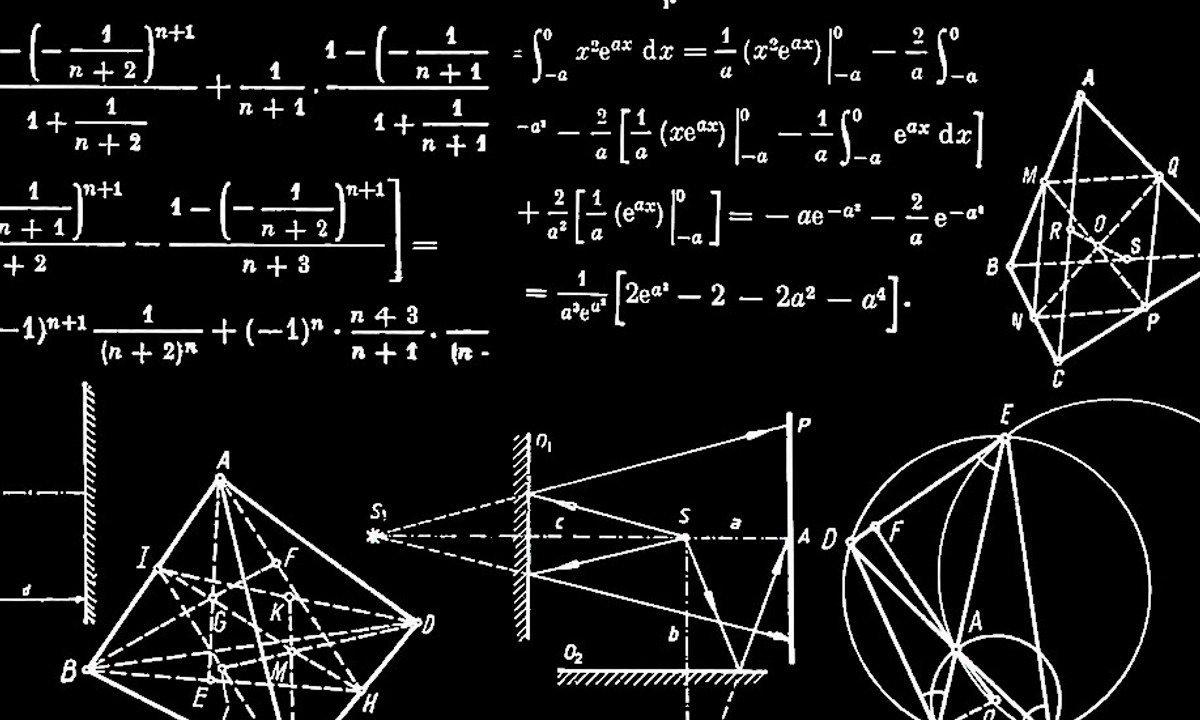Exploring the Landscape of Linear Algebra over Rings: A Journey Beyond Fields
Linear algebra, a cornerstone of modern mathematics, finds its roots deep within the fabric of vector spaces and transformations. Traditionally, this vast field has often been explored through the lens of fields, where the familiar operations of addition and multiplication allow for a seamless interplay of algebraic structures. However, as we delve deeper into the rich tapestry of mathematical theory, we uncover a fascinating extension of linear algebra that transcends the limitations imposed by fields: linear algebra over rings.
In this article, we embark on a journey into the intriguing world of linear algebra over rings, a realm where the conventional rules of multiplication and division yield to the complexities and nuances of ring theory. Here, we will examine how the structures of rings—a generalization of fields that relaxes certain conditions—give rise to entirely new landscapes for vector spaces and linear transformations. By broadening our perspective to include rings, we not only gain insight into more generalized algebraic systems but also enrich our understanding of the multitude of applications that arise in various mathematical and scientific disciplines.
Join us as we traverse through the foundational concepts, explore diverse examples, and highlight the significance of this extended framework. From modules to homomorphisms, the world of linear algebra over rings opens up new horizons, inviting both mathematicians and enthusiasts to engage with the interplay between algebra and geometry in ways previously unimagined.
Table of Contents
- Exploring the Foundations of Linear Algebra in Ring Theory
- Key Properties of Modules: The Heart of Linear Algebra Over Rings
- Applications of Linear Algebra Concepts to Ring Structures
- Recommendations for Further Study and Research Directions in Ring Theory
- Q&A
- The Way Forward

Exploring the Foundations of Linear Algebra in Ring Theory
At the intersection of linear algebra and ring theory lies a rich tapestry of concepts that illuminate the structure and properties of modules. Just as vectors form the backbone of vector spaces, modules over rings provide a more generalized setting in which linear transformations can be studied. Here, the notions of linearity, span, and basis expand beyond traditional vector spaces, inviting a broader array of algebraic objects. The examination of free modules, characterized by a basis that allows linear combinations to form a structure akin to vectors, illustrates how familiar linear algebraic principles can be adapted to fit into the ring-theoretic framework.
Moreover, understanding linear transformations in this generalized context opens doors to deeper insights. Key ideas such as homomorphisms and isomorphisms take on new meaning as we explore how properties of rings influence the behavior of modules. By employing the determinants and rank concepts from classical linear algebra, one can examine the critical role they play in module theory. The relationship between submodules and quotient modules mirrors that of subspaces in vector spaces, showcasing how these mathematical entities maintain their elegance and intricacy across different algebraic settings. The diverse applications of these principles highlight the underlying unity in algebra and provide fertile ground for further exploration.

Key Properties of Modules: The Heart of Linear Algebra Over Rings
Modules exhibit a rich tapestry of properties that draw parallelisms with vector spaces but offer unique nuances when considered over rings. One of the central features of modules is their ability to encompass both structured and unstructured elements, depending upon the underlying ring. This versatility results in a captivating interplay between the behavior of the module and the specific characteristics of its ring. Some key aspects include:
- Closure Under Addition: For any two elements in the module, their sum remains within the module.
- Scalar Multiplication: Each element can be multiplied by a scalar from the ring, retaining its membership within the module.
- Distributive Properties: Scalar multiplication distributes over both addition in the module and the ring.
- Submodules: Analogous to subspaces, submodules are subsets that are themselves modules.
Additionally, the investigation of free modules and projective modules reveals more profound applications in linear algebra. To illustrate these differences, consider the following table of properties:
| Module Type | Definition | Example |
|---|---|---|
| Free Module | Module with a basis where every element can be uniquely expressed as a linear combination. | Vectors in Rn |
| Projective Module | Module that can be expressed as a direct summand of a free module. | Direct summands of Rn |

Applications of Linear Algebra Concepts to Ring Structures
Linear algebra concepts play a vital role in the study and application of ring structures, enriching our understanding of algebraic systems by adding a geometric perspective. In a ring, the elements can be viewed through the lens of linear transformations, facilitating the exploration of modules—an extension of vector spaces that allow coefficients from rings rather than just fields. This diversity promotes a broader array of homomorphisms and provides insight into the structure and behavior of rings under various operations, enhancing computational techniques in algebra.
One significant application lies in the intersection of linear transformations and matrix representations of ring elements. Through endomorphism rings, we can analyze the behavior of linear maps within a defined module, leading to a deeper understanding of isomorphism classes and module homomorphisms. This can be summarized in a comparative table highlighting the key characteristics:
| Characteristic | Vector Space | Module over a Ring |
|---|---|---|
| Scalars | Field | Ring |
| Linear Combinations | Okay | Conditionally Well-defined |
| Isomorphism Types | Countable | Varied and Complex |

Recommendations for Further Study and Research Directions in Ring Theory
The exploration of linear algebra over rings unveils a myriad of fascinating avenues for further inquiry and scholarly pursuit. Future studies could delve into the intricate relationship between noncommutative rings and their modules, allowing researchers to derive new properties and insights that enrich the existing mathematical framework. Additionally, investigating the interplay between representation theory and ring theory may lead to innovative methods of classifying various algebraic structures, fostering a deeper understanding of their behavior under transformations.
Another promising direction is the application of computational techniques in the context of rings, wherein algorithms could be developed to solve linear equations in more exotic ring environments. This approach might not only streamline existing processes but could also facilitate the discovery of new classes of rings with unique algebraic properties. To summarize, the following areas are ripe for exploration:
- Theoretical connections between rings and modules
- Integration of computational methods in ring theory
- Applications of ring theory in cryptography and coding theory
Q&A
Q: What is linear algebra over rings, and how does it differ from linear algebra over fields?
A: Linear algebra over rings is an extension of linear algebra that operates within the framework of rings rather than fields. In linear algebra over fields, the focus is on vector spaces where scalars come from fields, which allow for division and provide a rich structure of multiplicative inverses. In contrast, rings may not have this division property; they might allow for zero divisors or lack multiplicative inverses altogether. Consequently, the theory and applications of linear algebra over rings can diverge significantly from those over fields, leading to unique properties and challenges.
Q: What are some key concepts unique to linear algebra over rings?
A: Some key concepts in linear algebra over rings include the notions of modules, which generalize the idea of vector spaces. While vector spaces consist of elements scaled by field elements, modules allow for the scalar multiplication by elements from a ring. Also, submodules play a parallel role to subspaces in vector spaces. The study of modules introduces concepts like free modules, projective modules, and torsion modules, which don’t have direct counterparts in the familiar setting of vector spaces over fields. Additionally, linear transformations in this context may behave quite differently due to the ring properties.
Q: Why is linear algebra over rings significant in mathematics?
A: Linear algebra over rings is significant because it broadens the scope of linear algebraic techniques and theories to encompass a wider variety of mathematical structures. It has important applications in areas such as algebraic geometry, representation theory, and module theory, where rings naturally arise. This extension allows mathematicians to tackle problems where traditional linear algebra may fall short, providing tools and frameworks that are vital for exploring the properties of more complex algebraic objects.
Q: Can you give an example of an application of linear algebra over rings?
A: One notable application of linear algebra over rings is in the study of solutions to systems of linear equations where coefficients come from a ring, such as the integers or polynomial rings. This can involve examining integer solutions to linear congruences or exploring vector spaces of polynomials equipped with additional ring structures. Such applications are crucial in fields like cryptography, coding theory, and computational algebra, showcasing how linear relations over more general structures can yield significant insights.
Q: What challenges arise when working with linear algebra over rings compared to fields?
A: One of the main challenges when working with linear algebra over rings is the lack of invertibility for every non-zero element, which can complicate the solution of linear equations. For instance, while any non-zero element in a field has a multiplicative inverse, this is not often the case in rings. This limitation can lead to the existence of solutions that depend on the specific properties of the ring, such as whether it is a domain, a division ring, or possesses units. Additionally, the structure of ideals in rings can introduce complexities in understanding submodules and direct sums that do not occur in simpler vector space settings.
Q: How do researchers approach the study of linear algebra over rings?
A: Researchers approach the study of linear algebra over rings through a variety of perspectives, including a blend of abstract algebra and computational techniques. They often delve into the theory of modules, analyzing how different ring elements interact within this framework. Furthermore, they explore the implications of various ring properties on module behavior, employing both algebraic and geometric techniques. Advancements in this area also benefit from connections to other branches of mathematics, drawing on both foundational theories and contemporary applications.
The Way Forward
As we conclude our exploration of linear algebra over rings, it becomes clear that this mathematical landscape is both rich and intricate, weaving together the threads of structure, abstraction, and application. The interplay between vector spaces and ring theory opens up a myriad of pathways for further inquiry and discovery, inviting mathematicians and students alike to delve deeper into the relationships that shape our understanding of algebraic systems.
The concepts we’ve discussed serve not only as foundational tools in theoretical mathematics but also as essential frameworks for practical applications across diverse fields, from computer science to physics. Thus, as you continue your journey through the world of linear algebra, remember that every matrix, every transformation, and every equation has the potential to unlock new dimensions of knowledge.
In an age where interdisciplinary collaboration is more vital than ever, the insights gained from studying linear algebra over rings can illuminate countless areas of research and innovation. So, whether you’re a seasoned mathematician or a curious learner, let the elegance of these theories inspire you to ask questions, seek connections, and push the boundaries of what you know. The adventure doesn’t end here; it merely sets the stage for the next exploration. Happy learning!






![Erratum for “An inverse theorem for the Gowers U^s+1[N]-norm”](https://azmath.info/wp-content/uploads/2024/07/2211-erratum-for-an-inverse-theorem-for-the-gowers-us1n-norm-150x150.jpg)

